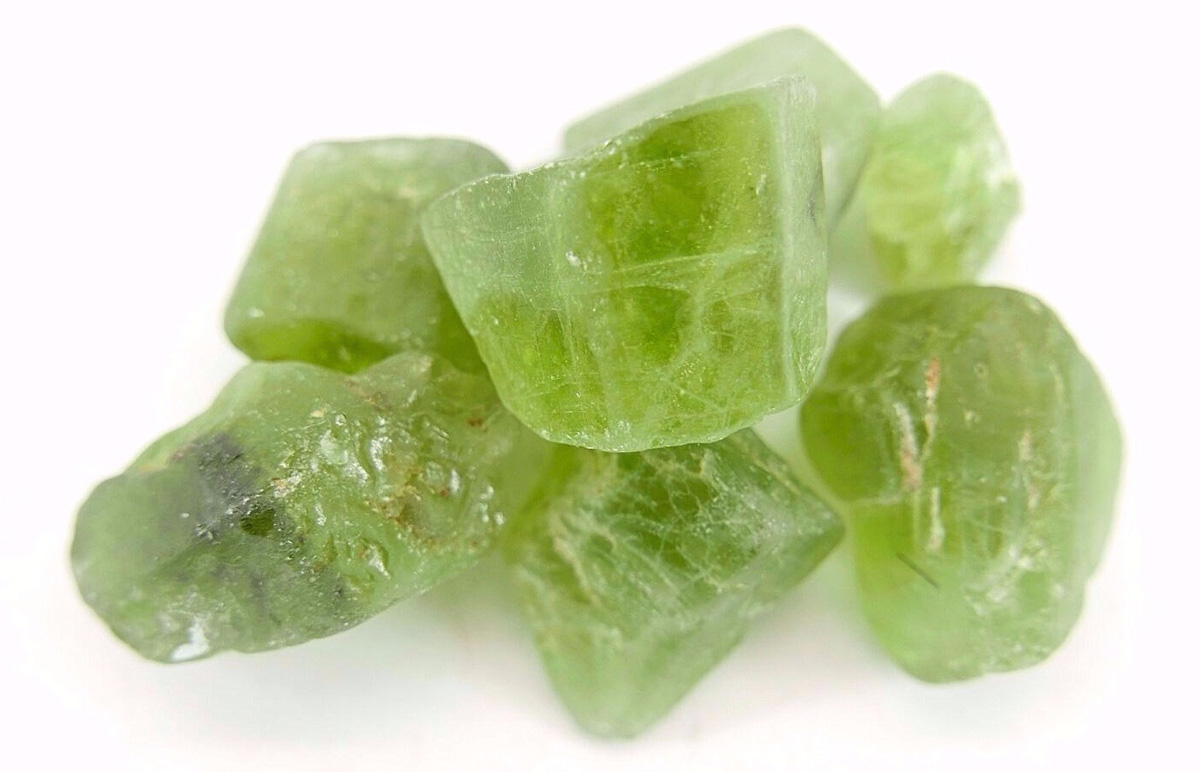
PHYSICAL PROPERTIES
- GROUP Silicates - nesosilicates
- COMPOSITION (Mg,Fe)2SiO4
- COLOR Green, yellow, brown, white or black
- CRYSTALLINE SYSTEM Rhombic
- CRYSTALLINE HABIT Tabular, massive, granular
- HARDNESS 6.5 - 7
- FRACTURE Conchoidal
- EXFOLIATION Imperfect
- GLOSS Vitreous
- STRIP White
- TRANSPARENCY From transparent to translucent
- SPECIFIC GRAVITY 3.3 - 4.3
- REFRACTIVE INDEX 1.64 - 1.69
MINERALOGICAL CHARACTERISTICS
The olivine is considered an important petrogenic mineral as it is present in much of the earth's crust. Olivine has also been found in ferrous and stony meteorites. As a gem, olivine takes the name of peridot and its main source is found in Pakistan.
The olivine belongs to the group of neosilicates or orthosilicates, formed isolated groups of silica tetrahedrons. Minerals in the forsterite-fayalite solid solution series are called olivine.
The green color of olivine is due to its iron content. The white and light tones are due to the iron in the fayalite, and the black or dark tones are due to the magnesium in the forsterite.
Olivine usually forms in igneous rocks, such as basalt and peridot.
Deposits: Pakistan, China, Brazil, South Africa, Australia, United States, Russia, Ireland and the Canary Islands.
THERAPEUTIC PROPERTIES
The olivine or peridot is a stone to advance and evolve. It is associated with the heart chakra and favors self-love and relationships. Olivine is considered a cleansing stone, it is fresh and vigorous, and helps to open the consciousness to new possibilities for growth. It favors detachment and connection with one's own wisdom. Enhances psychological clarity and vision seeking.
On a healing level, it is said to help regenerate tissues and strengthen the eyes and skin.


